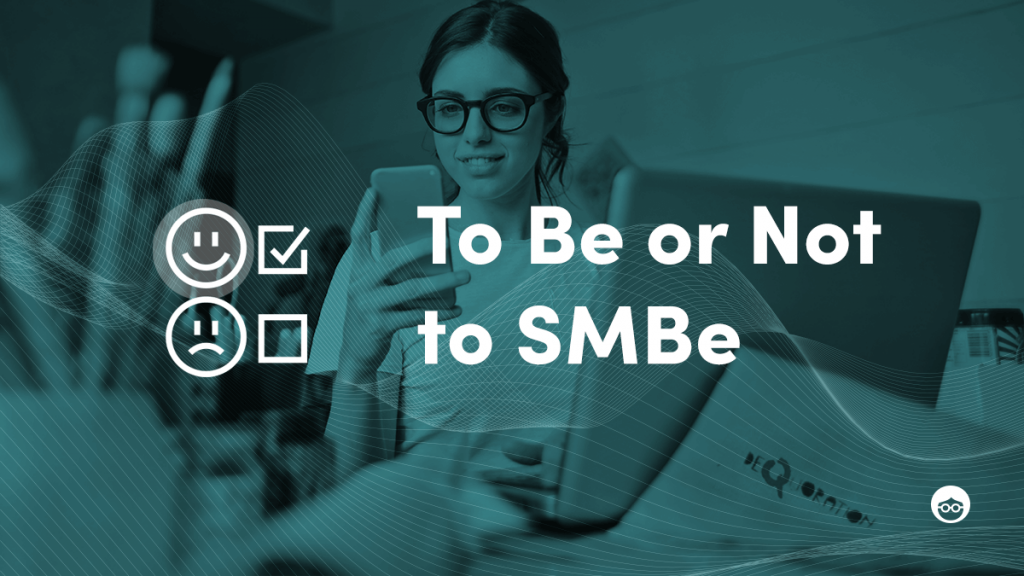7 Small Business Advertising Ideas

Small businesses are often faced with the challenge of advertising effectively on limited budgets and resources. Compared to the big brands, this may seem to leave few options for small businesses to promote themselves and reach their target audiences.
However, nothing could be further than the truth.
The internet levels the playing field, and by implementing advertising strategies suitable for small businesses, your business can work with fewer resources to get the word out about your products and boost your customer base and revenue.
Let’s explore the advertising strategies small businesses can start using today to succeed:
1. Local advertising
Many small business owners rely on word-of-mouth advertising to promote products and services. However, until a critical mass is achieved, it can be difficult to get the reach you want. Local advertising helps solve this problem by strategically placing advertisements in high traffic areas near and around your business and the area your immediate customers live.
Local advertising refers to a specific geographic focus often with physical and OOH advertising. The classic example of this would be renting out a billboard, but there are many more avenues that local advertisers can take, such as radio, television, and even digital channels, like social media and blogs.
By focusing on immediate audiences, marketers save the time and effort of trying to stand out from bigger competitors and businesses who may have roots beyond the local community.
Local advertising is important for local economies too, because it is often used to promote employment opportunities, advance local causes, and create awareness of small businesses. Don’t underestimate the power of your local community for getting the word out about your business.
2. Retargeting
A retargeting strategy allows small business owners to re-engage potential customers, and hopefully establish a long-term relationship with the target audience. Because retargeting reminds past or potential customers about a business or product, it can be impactful in influencing attitudes and boosting engagement.
Through retargeting, you can track your website visitor’s browsing activity online and serve them ads related to their interests. In particular, it enables marketers to target people who previously visited your site, so they are high potential customers.
Retargeting can be done via display networks and social media platforms, serving ads to those users who already showed interest in your website. Native ad networks are also a powerful way to retarget on the open web. Retargeting also helps lower your cart abandonment rate by serving reminder ads for items in their cart, driving customers to complete the checkout process.
3. Native advertising
Native advertising enables advertisers to promote their brand, products or services in a non-intrusive way on websites where their target audience likes to visit. As opposed to banners and other traditional ads, native advertising does not interrupt users’ web experiences; rather, it fits seamlessly within the context.
Here’s an example. Say you know your customers are frequent visitors to a particular website. You might then invest in native advertising by collaborating with the site owner on an article or blog that readers might be interested in, and later in the article, your brand is mentioned during a short write up.
Another way to advertise natively is by signing up with a native network, such as Outbrain. Via your own dashboard, you can create, promote and target native campaigns, paying only for clicks. Advanced bid strategies enable you to target according to your campaign goal, such as conversions or app installs, so you can be sure to get the best return for your advertising spend.
By working with a native network, or collaborating on native content as with the sponsored Buzzfeed article in the above example, small businesses can provide relevant, interesting content to their audiences on high quality websites. It’s a great way to hook in high potential customers at an affordable cost.
4. Mobile app advertising
In the US, 57% of mobile phone users spend a minimum of 5 hours on their phones every day, so mobile advertising is not just “nice to have”, but a must, for small businesses too.
This boom in mobile phone use has in fact created a massive new opportunity for small business advertisers to reach consumers through their smartphones.
One popular mobile app advertising method, especially in mobile gaming, is getting users to watch an ad in exchange for a great incentive. This form of advertising allows small businesses to reach wider target audiences, including those who may not live near their brick-and-mortar locations.
For any company that has a physical location, however, location targeting through mobile app ads becomes an even more essential marketing strategy. It ensures that customers in the area will be able to see your ads when they are in the store or in the vicinity of the store, prompting them with special offers and incentives to visit and purchase.
The best part about location targeting is that it can be done on both desktop and mobile devices, which means you can target not only people in the local area but also tourists who may be looking for specific attractions.
5. Social media advertising
With more than 3.6 billion people worldwide using social media, social media marketing is an essential channel for small businesses to reach their target demographic in a relatively cost-effective manner. With a combination of paid and organic methods, small businesses can create opportunities to engage with consumers beyond traditional advertising methods that are not as popular or common as they once were.
The power of social media lies in its ability to create meaningful connections between people and businesses. It can be used to increase brand awareness, engagement, and lead generation.
The best part is, social media marketing can be managed on a DIY basis, so small businesses can get started independently before deciding to invest in social media strategists or agency commitments.
6. Video advertising
Video ads are a great way for small businesses to reach out to consumers, especially as video is becoming the more preferred and engaging advertising medium. Certainly for small branding purposes, videos are often much more effective than static print ads or digital ads.
By optimizing video ads, small businesses can provide a better viewing experience than mere text or images. Video content can be crafted for a range of advertising goals, such as promoting, selling, entertaining, educating, or storytelling, with the ultimate aim of converting audiences to paying customers.
Video ads work best when they are short and engaging, ideally less than 30 seconds long. As a small business, video ads can feature on the company’s own website, social media pages, YouTube channel, or as native video ads on Outbrain’s network too.
7. Lookalike audiences
Lookalike Audiences is a powerful targeting strategy in digital advertising, enabling advertisers to target new, untapped audiences who show similar behaviors and interests to existing audiences – meaning they have a higher potential of converting.
Targeting lookalike audiences makes it easier for small businesses to find and reach more of the “right” consumers. One of the ways to do this is Facebook Lookalike Audiences. Beyond the closed social media networks, Outbrain supports Lookalike Audience targeting on the open web, finding users who behave like your current customers, and serving native ads that will engage them and entice them to click on your content.
How to Market your Small Business Effectively
Now we’ve identified 7 top SMB advertising channels and strategies, let’s go through some best practices for marketing a small business.
1. Understand your buyer persona
A buyer persona is a detailed “snapshot” of the type of people who make up your target audience. A business can focus on one buyer persona, or several different ones. Understanding the pain points, needs and wants of buyer personas can help you craft an effective message about your product or service that resonates with them.
2. Maintain a user-friendly website
A website must be designed with its users in mind. A user-friendly website is intuitive, easy to navigate, attractive and features relevant content to enhance the visitor experience. For small business owners in particular, who may not have a dedicated team to manage their website, this means keeping your site up to date, fresh, and bug free. It is definitely worthwhile considering running a blog and updating the design and layout to reflect contemporary trends. And of course, every website must be optimized for mobile. Not only does this impact the user experience on mobile, it also helps you rank higher in Google search results.
3. Invest in the right tools
Small businesses especially need to focus on investing in the right tools in order to grow and develop. There are loads of tools out there for digital marketing, making it hard to sort through them and find out which ones are worthwhile in terms of cost and efficacy. Plus there are many free tools available, so you can get the benefits without breaking the bank. In this arena, research is definitely the key. This list of 11+ marketing tools is a great place to start.
4. Make testing a habit
The success of digital marketing hinges on testing. By testing your ads and campaign performance, you can know what works and what doesn’t, and how you can optimize future campaigns for better results. Many digital marketing platforms enable you to test and track your online marketing activity. If you’re feeling lost, check out this article on A/B testing, one of the most common ways to test digital campaigns.
Small Business Advertising: Find Your Way
Small businesses might be “small”, but there is no need to think small when it comes to advertising. Today more than ever, small businesses can achieve amazing results with advertising online, and on affordable budgets too. It’s really a matter of exploring all the available channels, and identifying the goals and target audience. From there, any small business marketer can find the best way to engage audiences, drive customer traffic in store and online, and boost revenue.


